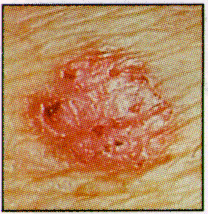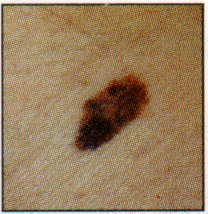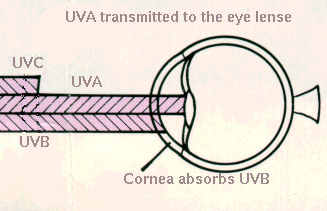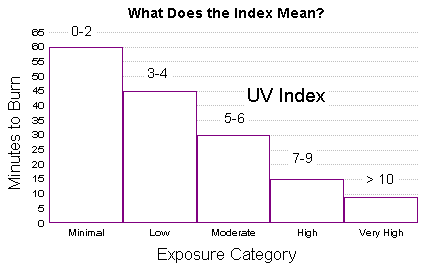 - Advanced stage.
- Advanced stage.
Exposing your skin to ultraviolet radiation stimulates melanin-producing cells. With increasing amounts of melanin you skin darkens. This tanning provides a protection against UV radiation damage. Prolonged exposure to UV radiation causes the skin to loss its resiliency and over time your skin will begin to look like leather. UV radiation can also activate a cancerous transformation of skin cells.
 Basal Cell Carcinomas begins as small shinny bumps and grows
slowly. It is the most common form of skin cancer.
Basal Cell Carcinomas begins as small shinny bumps and grows
slowly. It is the most common form of skin cancer.
 Squamous Cell Carcinoms is another common form of skin cancer.
When these tumors first appear they are firm to the touch. They, like the basal cell
carcinomas, appear most often on sun-exposed areas of your body.
Squamous Cell Carcinoms is another common form of skin cancer.
When these tumors first appear they are firm to the touch. They, like the basal cell
carcinomas, appear most often on sun-exposed areas of your body.
 Malignant Melanoma is the most dangerous form of skin cancer.
Malignant melanoma, like basal and squamous carcinomas, is linked to overexposure to the
sun; however, it can appear any place on your body. When detected early and with proper
treatment, the recovery rate from this form of skin cancer can be very high.
Malignant Melanoma is the most dangerous form of skin cancer.
Malignant melanoma, like basal and squamous carcinomas, is linked to overexposure to the
sun; however, it can appear any place on your body. When detected early and with proper
treatment, the recovery rate from this form of skin cancer can be very high.
 - Advanced stage.
- Advanced stage.


Your eyes are also sensitive to overexposure of UV radiation. UV-B is partly absorbed by the cornea. UV-A passes through the cornea and with time and overexposure may contribute to the formation of cataracts. Snow reflects up to 85% of the incident UV radiation. This additional amount of absorption of reflected UV-B radiation by the cornea can result in snow blindness -- a sun burning of the eye. Sunglasses screenout 99% of the UV-A and UV-B radiation reaching your eyes.

Fortunately, if detected early, the cancers listed above can be treated. DO NOT PANIC. Sunshine is also good for us! It makes us cheery. UV radiation plays a role in the our body's production of vitamin K. A lack of vitamin K can lead to liver damage and jaundice. Green leafy vegetables are one common source of vitamin K. So your parents were right -"Eat your vegetables." Speaking of plants, UV radiation is important in the pollination of certain plants. Some insects, such as honeybees, find reflected UV light by some plants alluring. Some spiders take advantage of the alluring nature of reflected UV radiation to some insects by including strands in their web that are UV reflective, and thus also alluring.

Your risk of skin cancer is related to the amount of time you spend in the sun and your skin type. By answering a few simple questions you can estimate your sensitivity to UV exposure. Before taking the test, there are some facts that you should know.
The amount of UV radiation that you are exposed to depends on
This test is qualitative in nature. You are well aware of how easily you sunburn and you should take appropriate actions. If you have problems you should see your medical doctor or a dermatologist.

The UV Index is a forecast of the expected risk of overexposure to the sun. It was developed by the National Weather Service and the Envrionmental Protection Agency and is broadcasted by some television and radio stations. Based on a scale from 0-10, it indicates the degree of caution you should take when outdoors. A 10 indicates a high risk of overexposure to UV radiation. The forecast of the UV Index takes into account, latitude, altitude, weather conditions, time of year and ozone concentrations.
The skin cancer images were obtained from a pamplet distributed by the American Academy of Dermaology. For more information, their address is: American Academy of Dermatology, 930 North Meacham Road, P.O. Box 4014 Schaumburg, IL 60168-4014.
Please refer questions to Dr. Steve Ackerman/stevea@ssec.wisc.edu